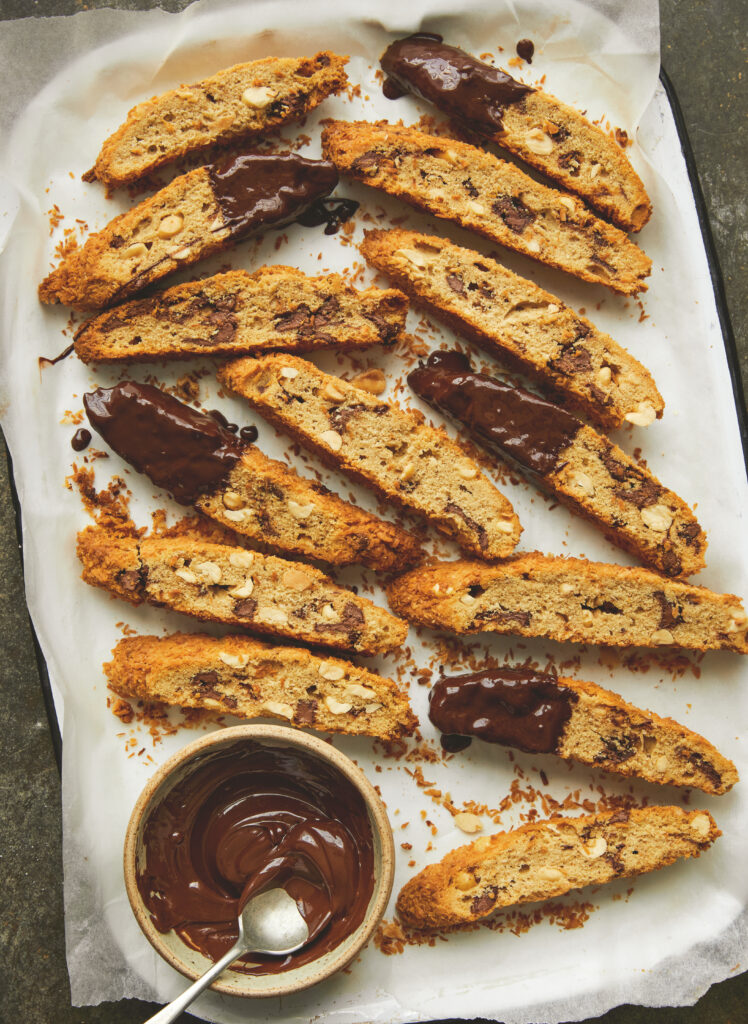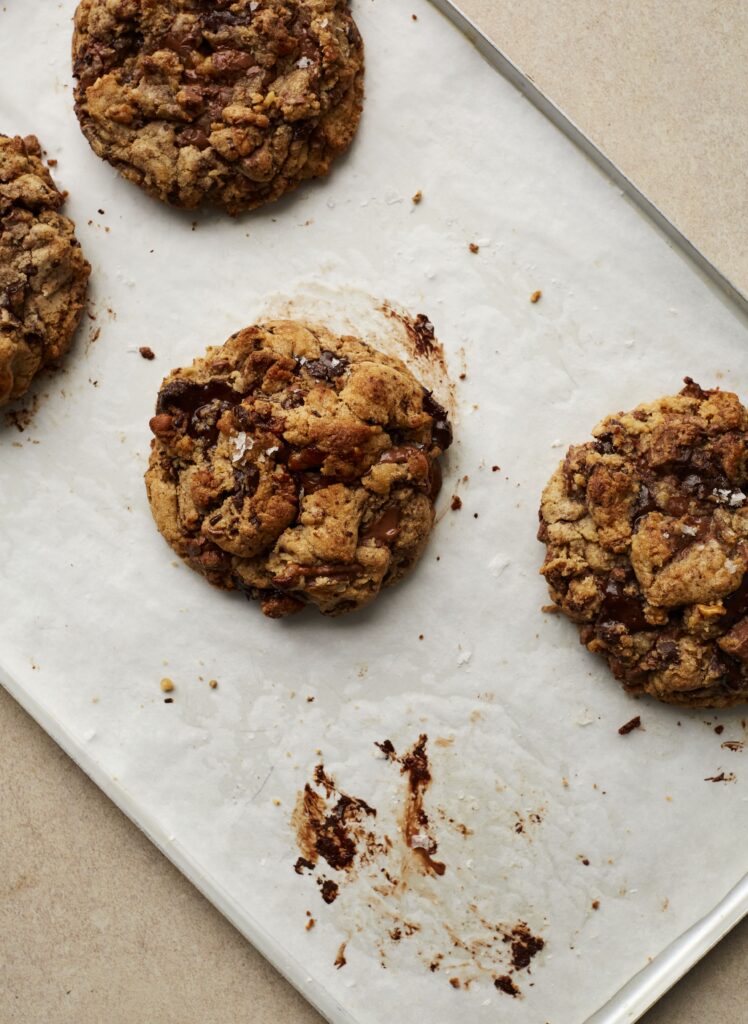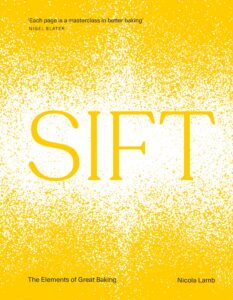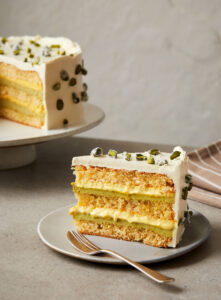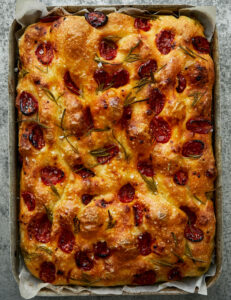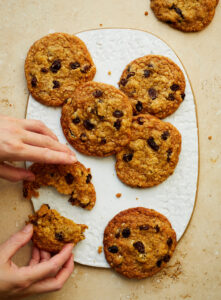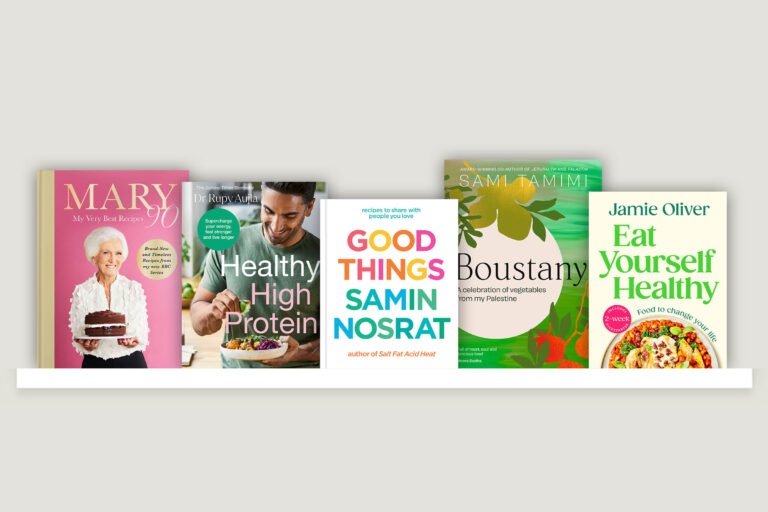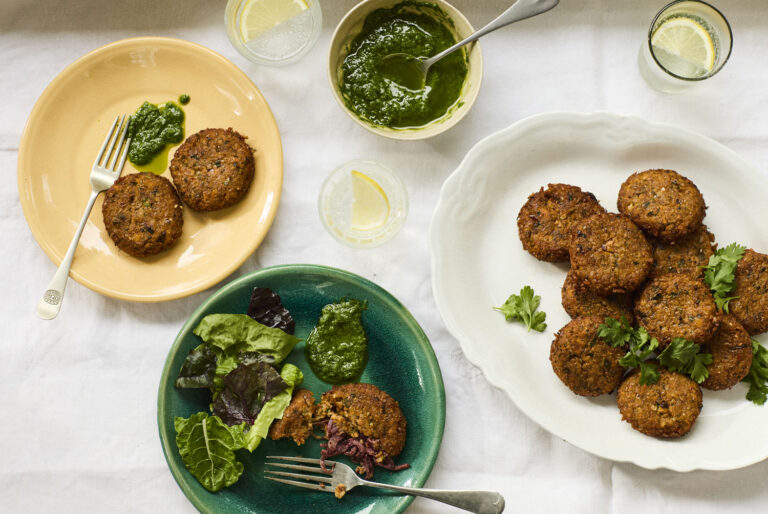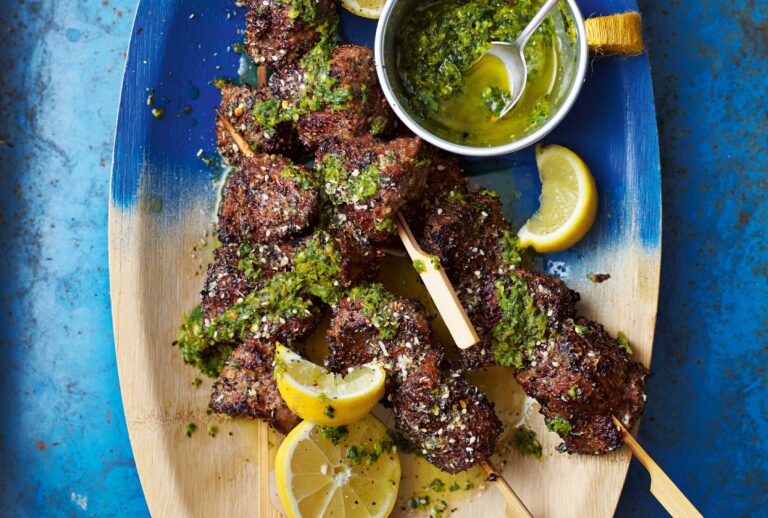Welcome to Baking Basics, a new column penned by Nicola Lamb, author of SIFT: The Elements of Great Baking. This week we’re learning how to make the perfect batch of cookies. You can also catch up on last week’s column, where we learned how to make the perfect sponge cake.
Get the book
Buy From
Have you heard the story of how cookies were invented a million times? Even if it is just Nestlé marketing spin, this is how the tale goes: The chocolate chip cookie was invented in 1938 by Ruth Wakefield, the proprietor of the Toll House Inn, a popular hotel in Massachusetts. One day (and this is where the story gets a bit dodgy), Ruth whipped up a batch of her butterscotch cookie dough and added small chocolate pieces, thinking the chocolate would melt and disperse evenly through the dough when it baked. Much to her “surprise”, the chocolate remained intact during the bake, resulting in mottled chunk-filled cookies. Ruth’s accidental invention was an immediate hit. We’re still talking about them some 85 years later, after all.
Like other legendary origin stories – the Tarte Tatin, for example – the veracity of this story is unclear. I personally believe Ruth is a baking God and knew exactly what she was doing, and she should be celebrated for her smarts, not her ‘mistakes’. Either way, Ruth’s recipe was printed on the back of the Nestlé packets of chocolate chips and named ‘Mrs Wakefield’s Toll House Cookie’. This recipe became known simply as ‘Toll House Cookies’ and is still the most famous cookie recipe in the US today.
The original recipe, of course, has been tweaked over the years. Over time, it has been adapted. A turning point in the life of the chocolate chip cookie was in a landmark New York Times article and the publication of the Jacques Torres formulation, which saw the butter and eggs lowered, resulting in a gooey-centered cookie which didn’t spread as much and was much richer to eat. Many recipes focus on this lower egg, lower butter formulation now, though there’s a whole host of cookie species out there today.
How to make perfect chocolate chip cookies
How many cookies there are makes it hard to ascertain what makes the ‘perfect’ version. After all, one of the best things about cooking and baking is how subjective it is; Are you a thin and crispy fan? What about a rich and chewy? Maybe you’re a lover of the soft and cakey? Or the big and chunky?
The more recipes I have developed over the years, the more I rely on ratios to understand what is going on in our baked goods and predict the final result:
• The more sugar in your cookie, the more it will spread and the chewier it will be.
• Butter: The amount of butter or other fat in your recipe is usually directly correlated to the spread, but a formulation that pairs low butter with high sugar will still spread a lot. Sugar really is the key factor in cookies.
• The balance of sugars is also important – molasses in light brown adds moisture and increases chewiness. The acidity also impacts the final result – acidic brown sugar will lead to a higher lift in cookies as the raising agents react when baking.
• Eggs provide moisture but are not an essential part of cookies, other than adding hydration.
• Flour is the main structure-builder in cookies. Some recipes benefit from an overnight rest period. Resting allows the flour to hydrate fully (the dough will appear drier) and, over prolonged periods, the starches and the proteins in the flour to break down, resulting in more complex flavour compounds once the dough bakes. This is not beneficial for thin, crispy cookies.
• Mix-ins: I’ve always thought of the ratio within the base dough (eggs, flour, sugar, etc.) to be the most important, and have always seen the mix-ins as ‘extras’, but the ‘STUFF’ in cookies play an extremely important role. The mix-ins break up the dough’s structure and behave differently in the oven. For example, nuts don’t melt or spread, which means they help create a chunky, packed texture. Chocolate, as we know, melts and reforms, slightly fudgier than before, but unlike nuts, it does contribute to the spread effect.
In my book SIFT, I had to include at least one cookie recipe. Enter the Miso Walnut Double-Thick Chocolate-Chip Cookie. What makes them thick? Well, their HUGE size! And, of course, lots of mix-ins. There are almost equal parts walnuts and chocolate to cookie dough! And trust me, you’ll LOVE these miso walnuts – the bitterness of the walnuts is tempered by the umami-filled miso and the tangy mirin rice wine. You’ll want to eat them with everything!
Compared to a more classic cookie dough, they have a relatively lower butter, egg and sugar content and increased flour and mix-ins. You can definitely adjust these cookies to suit your taste, but don’t scrimp on the nuts or chocolate (though you could swap more nuts for choc, and vice versa) as the ratio will be thrown off – your cookies will be a far cry from ‘double thick’, but they’ll still be delicious.
More cookie and biscuit recipes you’ll find in SIFT
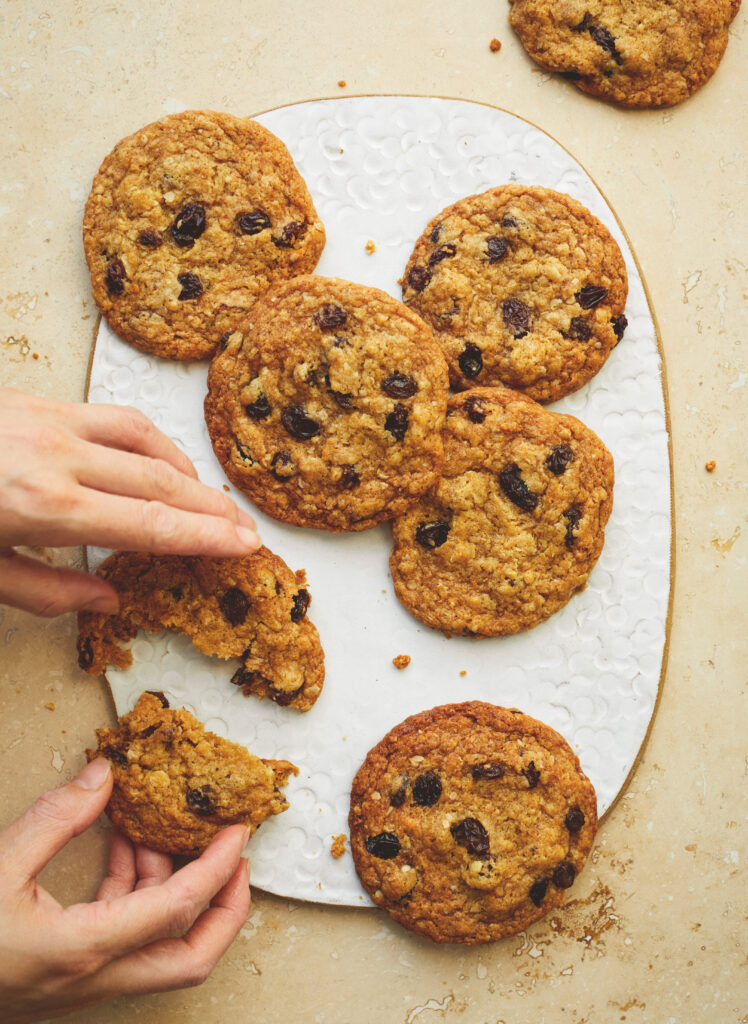
Brown Butter Banana Cookies
